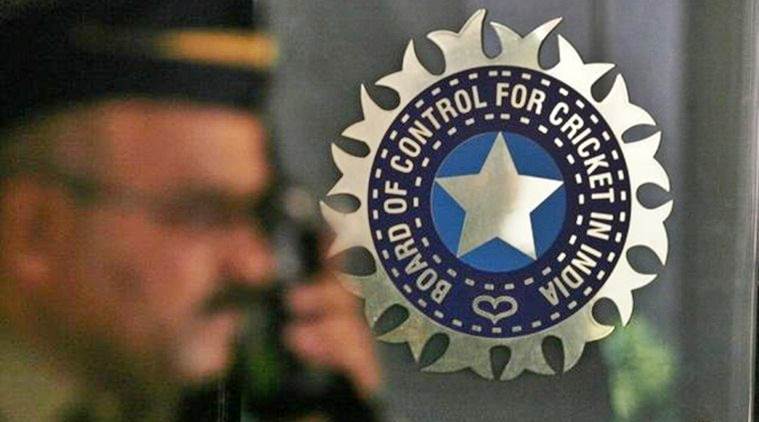
The cricket board’s decision to allow the National Anti-Doping Agency (NADA) to test its players has opened the door for cricket’s inclusion in the Olympics. The Board of Control for Cricket in India’s (BCCI) tussle with NADA has been one of the key reasons for the sport not being considered for the Games. But with talks about cricket’s inclusion in the 2028 Los Angeles Olympics gaining momentum, this is seen as the first step in that direction.
NADA director general Naveen Agarwal said BCCI’s decision will lead to the International Cricket Council (ICC) being declared ‘fully compliant’ with World Anti-Doping Agency’s (WADA) Code, thus helping cricket’s bid for future Games. “This decision will help cricket’s inclusion in the Olympics. It is important for the ICC to be WADA-compliant. Just because of BCCI, they have so far not been fully code compliant,” Agarwal told The Indian Express. “If they want their participating in the Olympics and such competitions, this is needed.”
The BCCI, on Monday, agreed to work with NADA for six months on a trial basis, although their decision comes with a rider. Sources said BCCI will allow NADA to test roughly 10 per cent of the total samples collected from Indian cricketers annually. They are likely to be given access to only under-23 or junior players, while international and domestic cricketers will continue to be tested as per the current process.
The BCCI, at present, has outsourced its sample collection programme to Sweden-based International Doping Tests and Management (IDTM). The samples collected by IDTM are analysed at Delhi’s National Dope Testing Laboratory, thus keeping NADA out of loop in the testing process.
Agarwal expressed reservations about BCCI’s anti-doping arrangement. “The decision on who needs to be in the testing pool and when should the athlete be tested has to be with NADA. BCCI can’t decide that. IDTM is a sample collecting agency and not a recognised testing authority. It doesn’t make any sense for any foreign company to do the testing here.”
Understanding WADA compliance
To monitor its programme, the World Anti-Doping Agency (WADA) has devised a Code that is binding on all its signatories. One of WADA’s core activities is to monitor the compliance of this Code. To make the system robust, WADA launched an ISO-certified Code Compliance Programme in 2016. “The programme, which represents the most thorough review of anti-doping rules and programs that has ever taken place, aims to reinforce athlete and public confidence in the standard of Anti-Doping Organizations’ (ADOs) work worldwide,” the WADA says on its website. To be eligible for the Olympics, every international federation has to be ‘code compliant.’ Becoming ‘code compliant’ is a three-step process: the organisation has to first accept the WADA code, amend its rules to include mandatory principles of the code, and finally, enforce those guidelines on its members. The ICC is one of WADA’s signatories. While the ICC has accepted WADA’s rules and included it in its laws, it has not been able to enforce it on all members. The BCCI, in fact, is reportedly the only ICC member that hasn’t accepted these rules. Consequently, WADA had threatened to declare ICC ‘non-compliant’, which would’ve dented cricket’s hopes of being a part of the Olympics in the near future.
Agarwal, however, said they are open to ‘accommodating some requests’ as long as they fall under WADA’s code. “We’ll have to examine what they exactly say. We are open to accommodating requests of federations to a certain extent as far as it’s permissible under the code,” Agarwal said. “We are willing to deal with BCCI if they come to us and can make some slight modifications here and there. In the last year or so, we have improved our systems tremendously. NADA is one of the best dope control agencies in the world right now.”
The BCCI-NADA thaw has come about after a long standoff. The Indian cricket board has historically cited flaws in NADA’s procedures as one of the reasons for not signing up with it. BCCI’s reluctance kept India at the centre of ICC-WADA negotiations. Earlier this year, WADA had reportedly threatened to declare ICC ‘non-compliant’ if the BCCI did not fall in line. Such sanction would have put cricket’s future in multi-sport events like the Olympics, Asian and Commonwealth Games under a cloud. The sport is due to return to the Asian and Commonwealth Games in 2022 while ICC is considering presenting its case for the sport’s inclusion in the LA Olympics.
While doping in cricket is not as deep-rooted as in sports such as athletics or weightlifting, the sport has had its share of positive tests in recent years, with Yusuf Pathan, West Indies’ Andre Russell and Pakistan’s Yasir Shah failing dope tests.